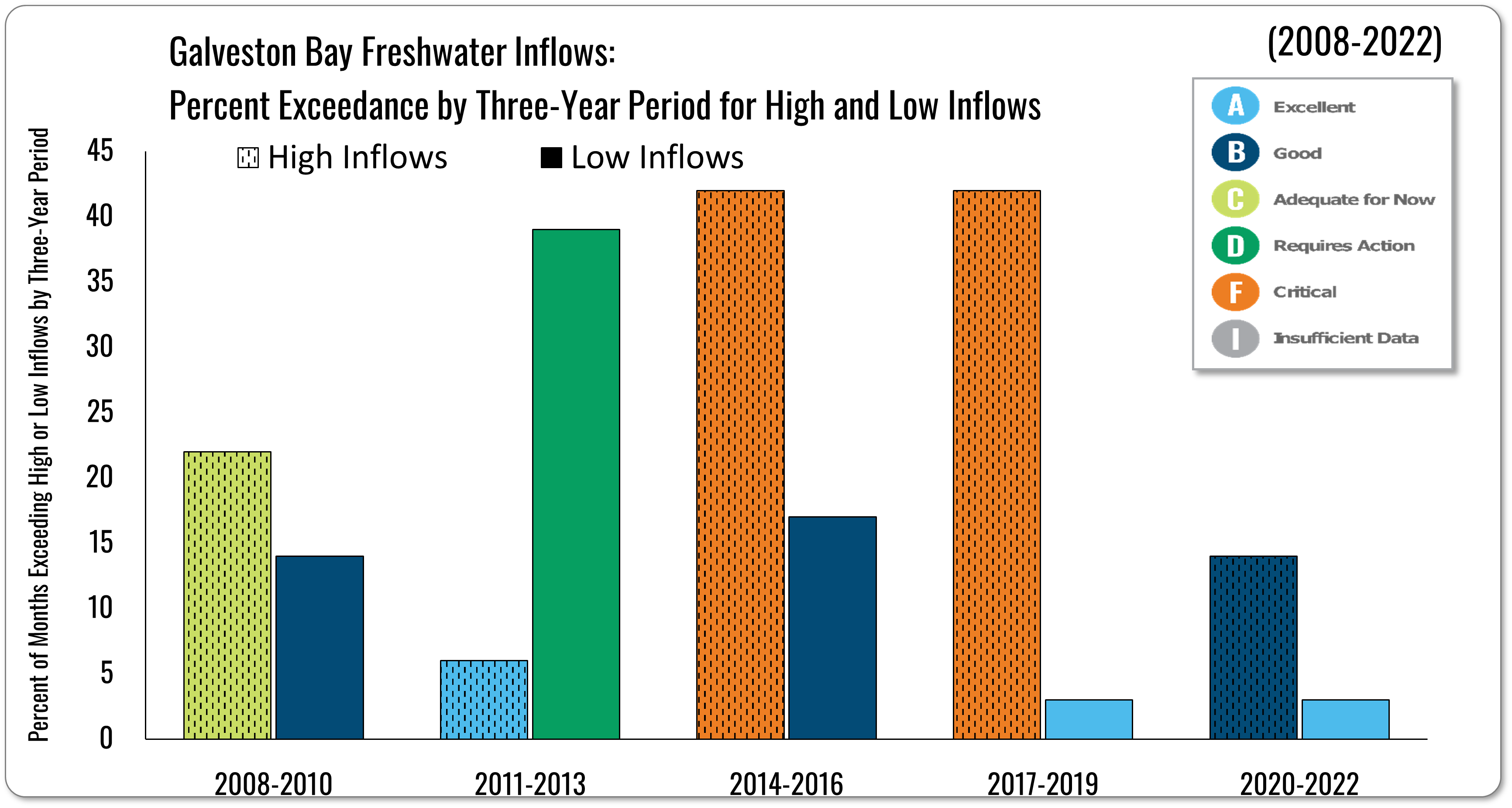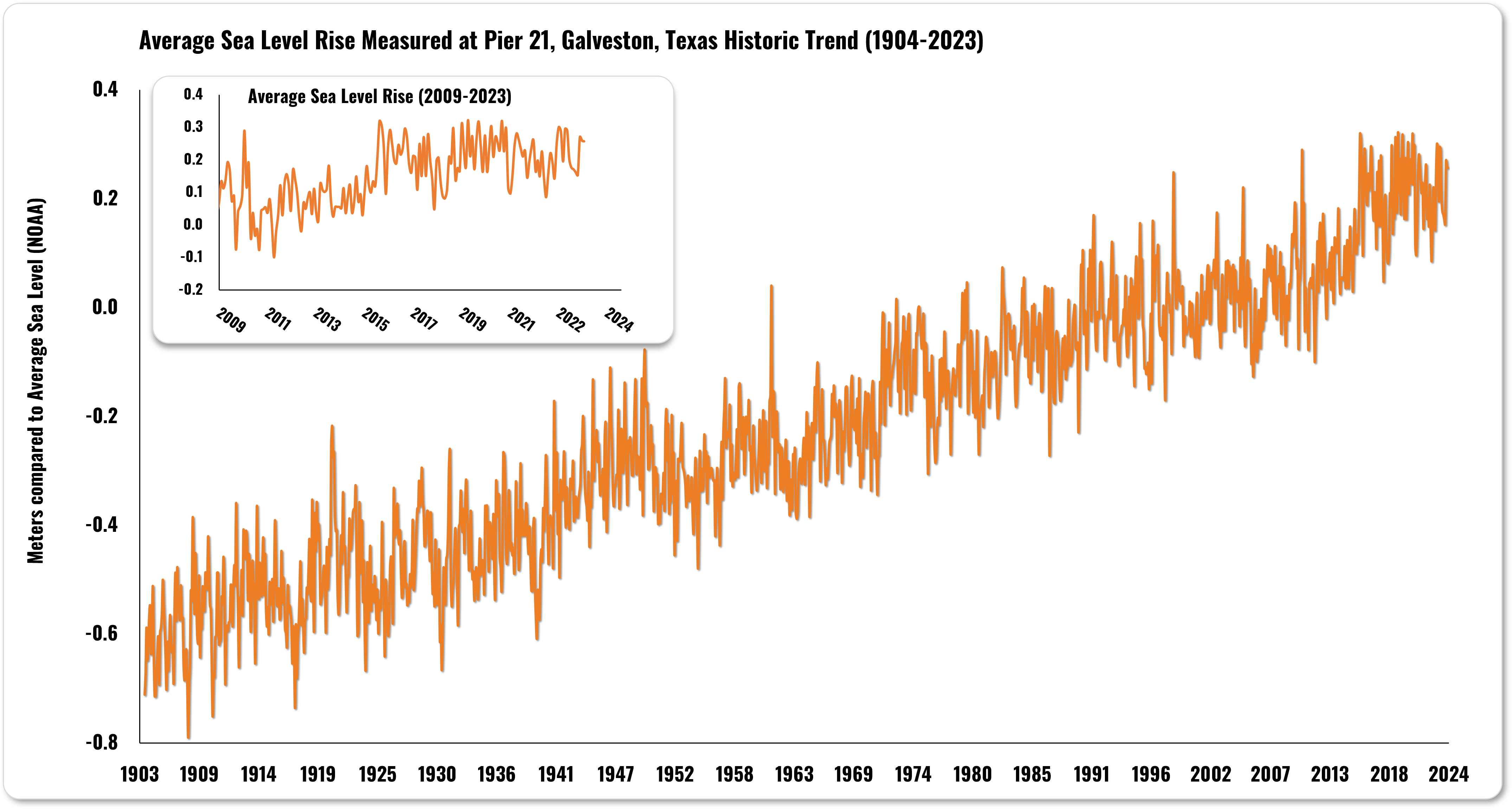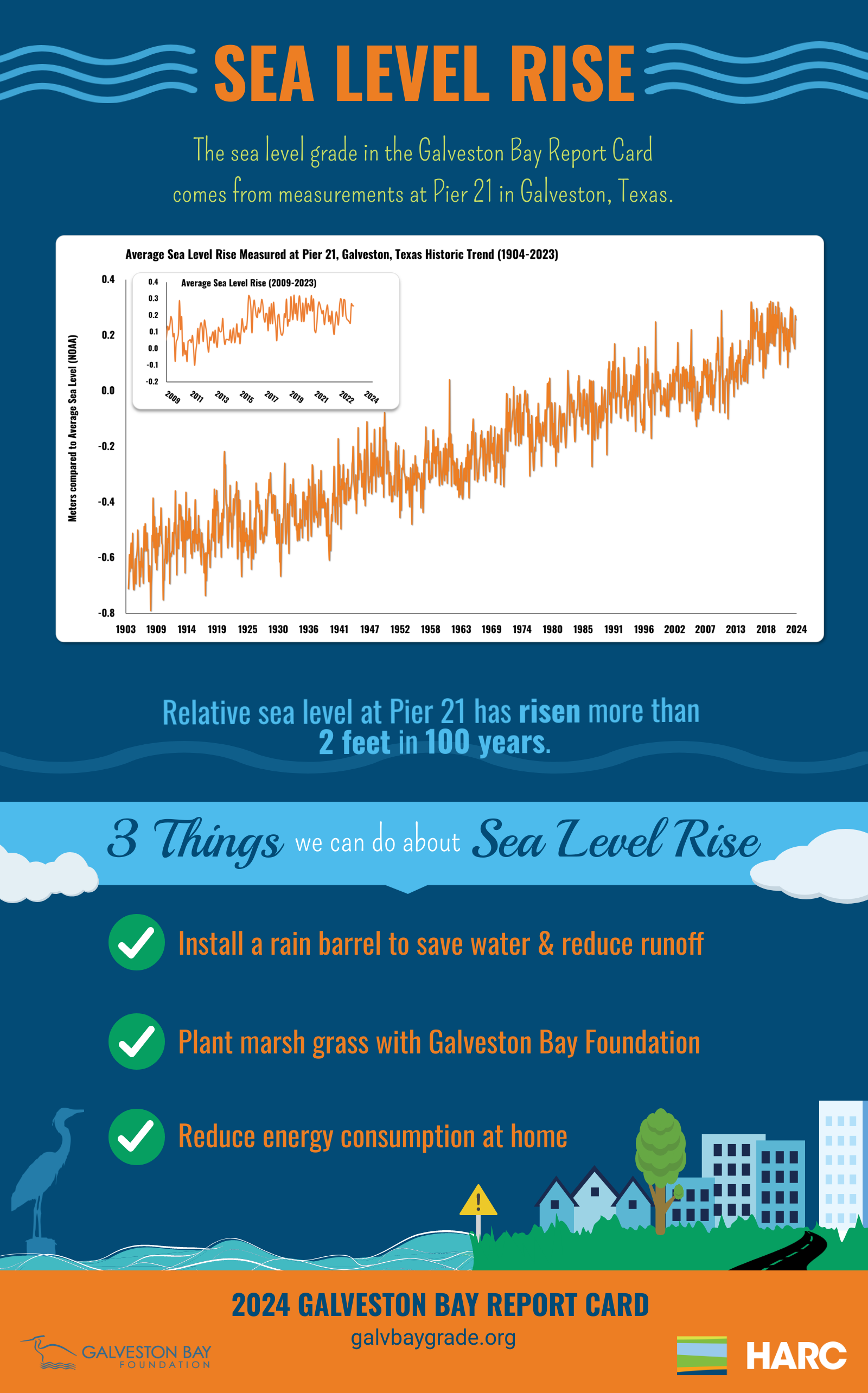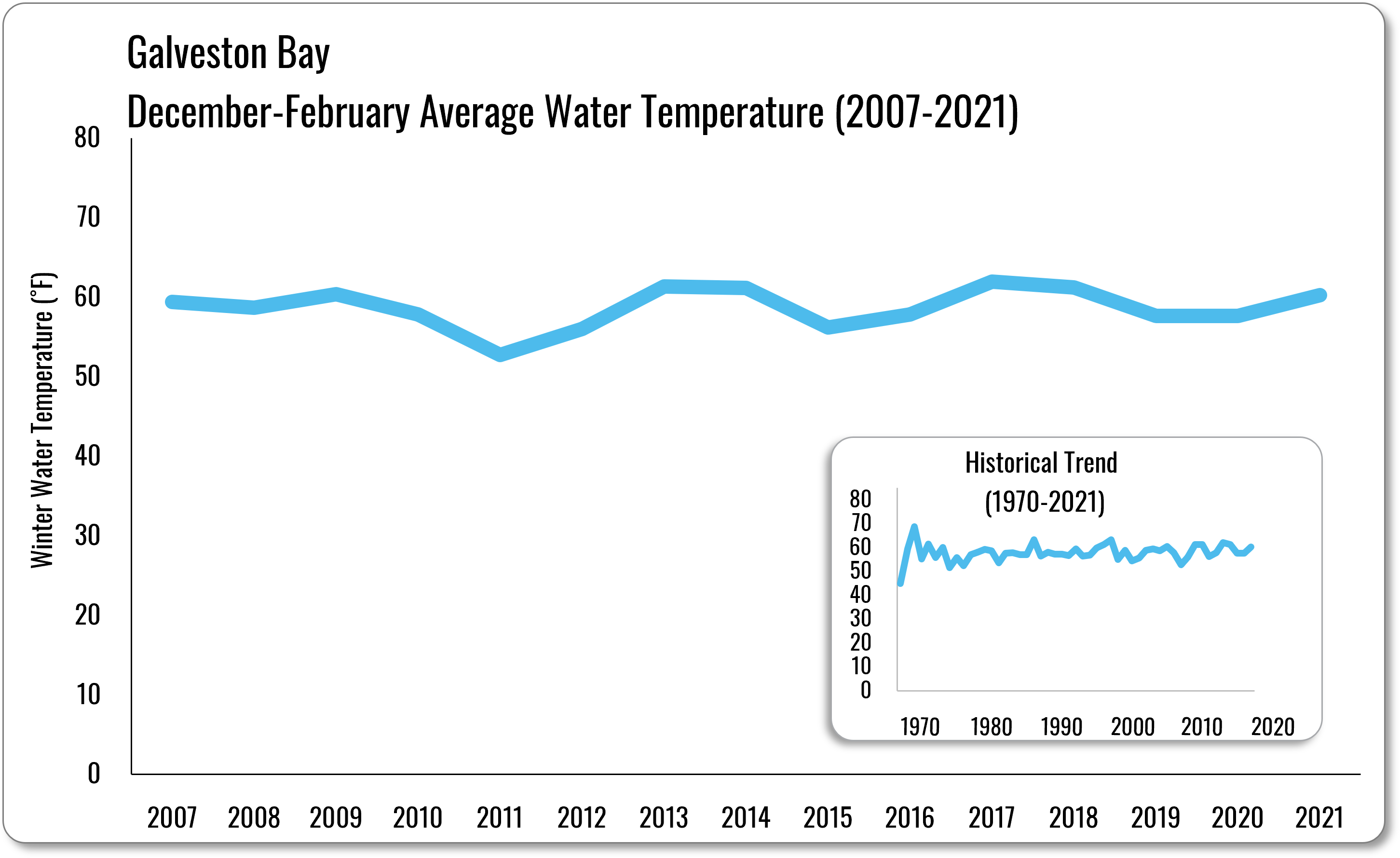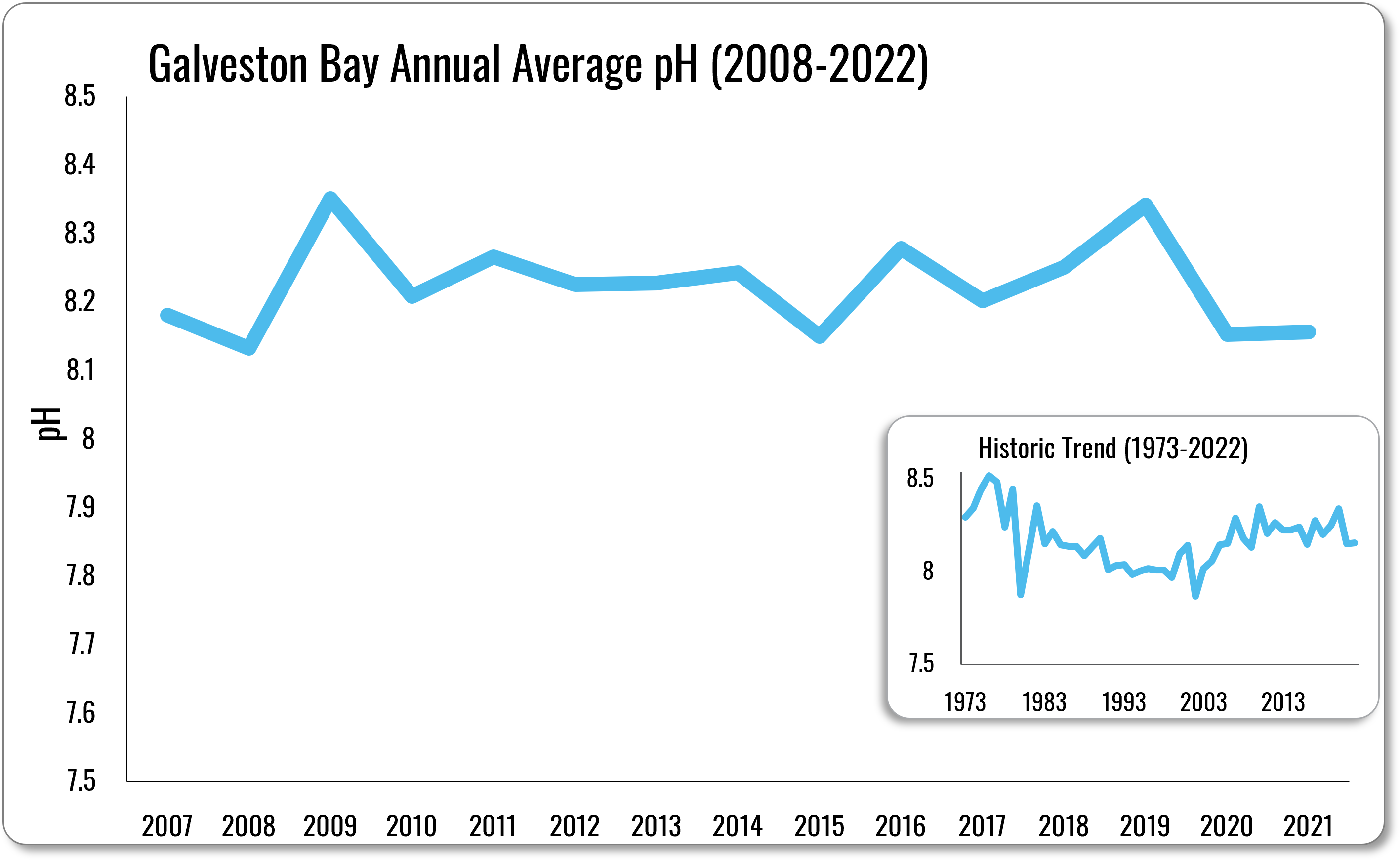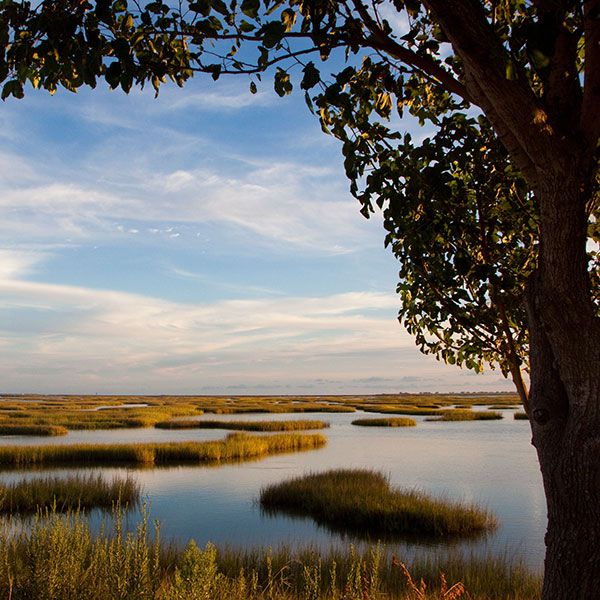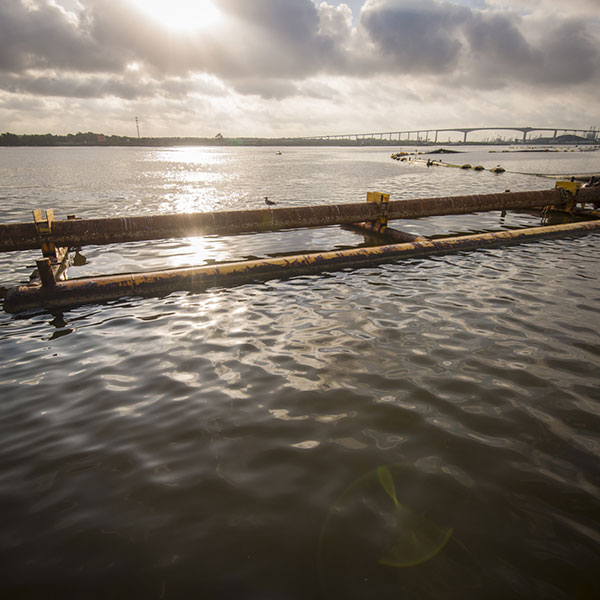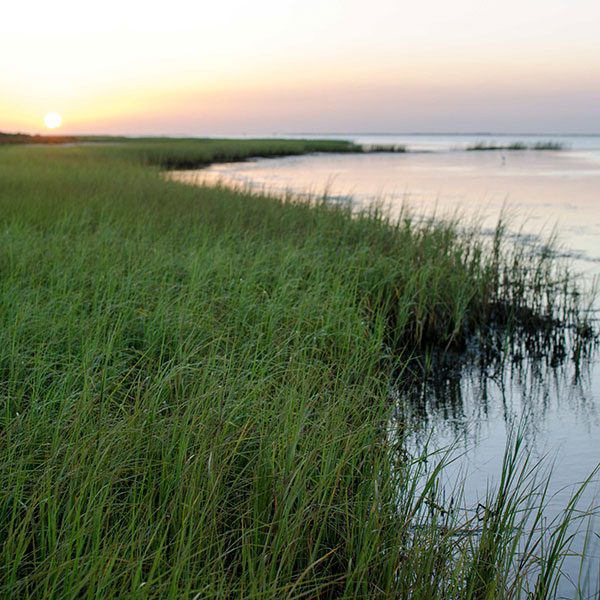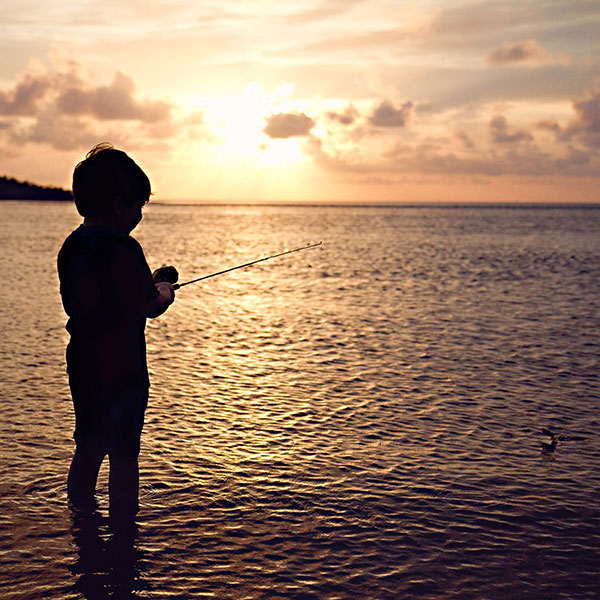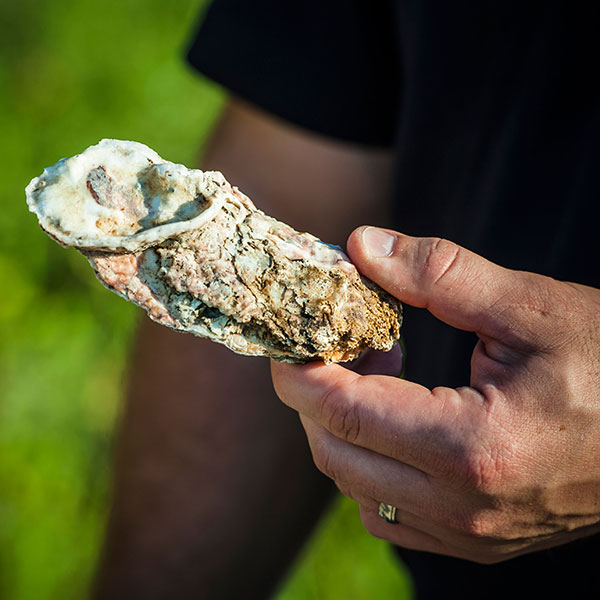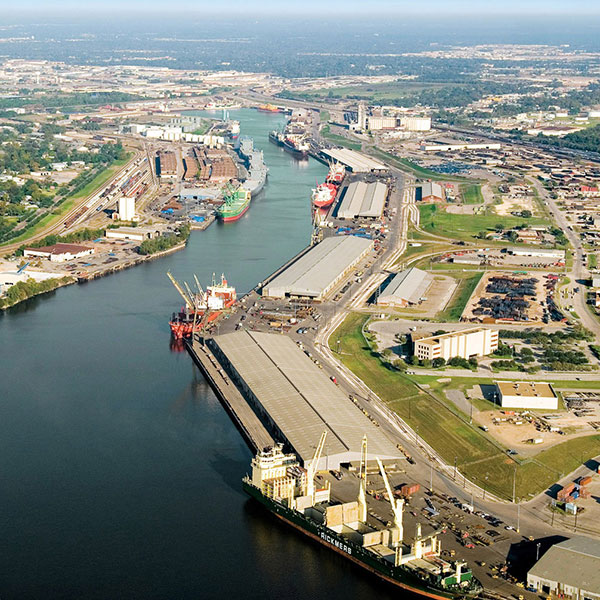Coastal change is becoming a high priority as communities around the world face climate-related challenges. Nearly half of the U.S. population lives in coastal areas and the majority live in urban centers such as the Houston-Galveston metropolitan area. It is vital that we understand our vulnerabilities to a changing coast and adapt to enhance resilience in the Houston-Galveston region and along Texas’ coastline. Vulnerabilities as a coastal metropolis, often involve our reliance on and proximity to water.
While pH levels of the Bay have levelled out, winter water temperatures remained consistent in 2023, the high rate of relative sea level rise and increases in freshwater demands are concerning. Winter water temperature is an important indicator for invasive species, and can indicate overall warming that can impact bacteria production and stress Galveston Bay organisms. As sea level rises and weather patterns change, alternating between extremes of drought and flood, extreme heat and cold, we will witness measurable changes in the physical environment of Galveston Bay.

